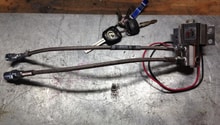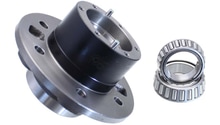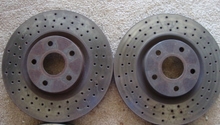Lexus ES RX: How to Replace Brake Pads
This article covers how to properly change the brake pads on your Lexus ES or RX. Doing it yourself saves you money otherwise spent on an expensive mechanic bill.
This article applies to the Lexus ES, RX (2005-2014).
The brake pads on your vehicle use friction to initiate stopping. The pads are then inserted between a hydraulic piston-actuated mechanism known as the caliper. When pressure to the brake is applied, the hydraulic action of the caliper causes the pads to be pushed against a disc known as a brake rotor, stopping of the vehicle. Over time, these pads will wear and need to be replaced in order for effective braking to occur. This job can be completed at home without extensive knowledge of vehicle mechanics, but it is definitely recommended to have some.

Materials Needed
- Jack and jack stands
- Lug wrench
- 3/8" ratchet
- 14mm socket
- C-clamp
- Bottle of brake/parts cleaner
- Mop bucket to rest caliper on
Step 1 - Jack up the vehicle and remove the tire to access the brake assembly
Use a floor jack to lift the vehicle off the ground and remove the tire. It is beneficial to loosen the wheel lug nuts slightly before jacking the vehicle up off the ground in order to ease removal of the tire. Always use a jack stand in conjunction with the jack to ensure proper safety when working on your vehicle. Failure to do so could cause the car to fall unexpectedly if the jack were to fail. With the tire removed you will be able to access the brake caliper and rotor assembly.
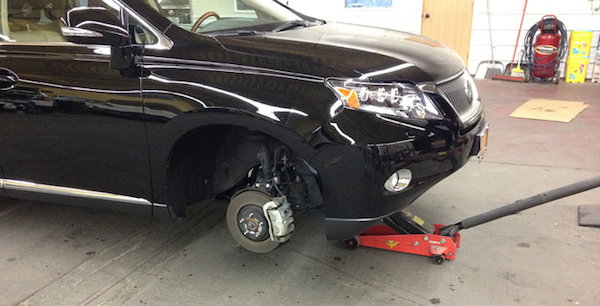
(Related Article: How to Jack Up Your Lexus - ClubLexus.com
Step 2 - Remove caliper and brake pad
Use a ratchet and 14mm socket to remove the caliper bolts. Once you have removed the bolts you can wiggle the caliper free of the rotor and slip the pads out of the caliper. Make sure to rest the caliper on a bucket or object tall enough as to not put stress on the brake line attached to the caliper.
Once the caliper is out of the way, remove the old/used brake pads from the carrier. The pads are slid in place using two grooved metal clips. Take note of how the old pads are removed from the carrier as installation of the new pads will be the reverse. Once the pads are removed, clean off the caliper and brake pad clips with a spray of brake cleaner.

Figure 2. Remove the two bolts securing the caliper to the caliper bracket. 
Figure 3. Secure the caliper out of the way with a string or length of wire.
Step 3 - Reset the caliper piston and new pad installation
Since the caliper is hydraulically piston-actuated, you must reset/depress the caliper piston back into the piston cylinder so that the caliper can be re-installed over the new pads. The new pads will be much thicker in dimension, as material from the old pads has been worn away due to use. Using a C-clamp around the caliper and the piston, tighten the C-clamp until the piston is depressed back into the piston cylinder. install the new pads in the carrier on both front and backsides of the rotor/disc in the same fashion as you removed them in Step 2.
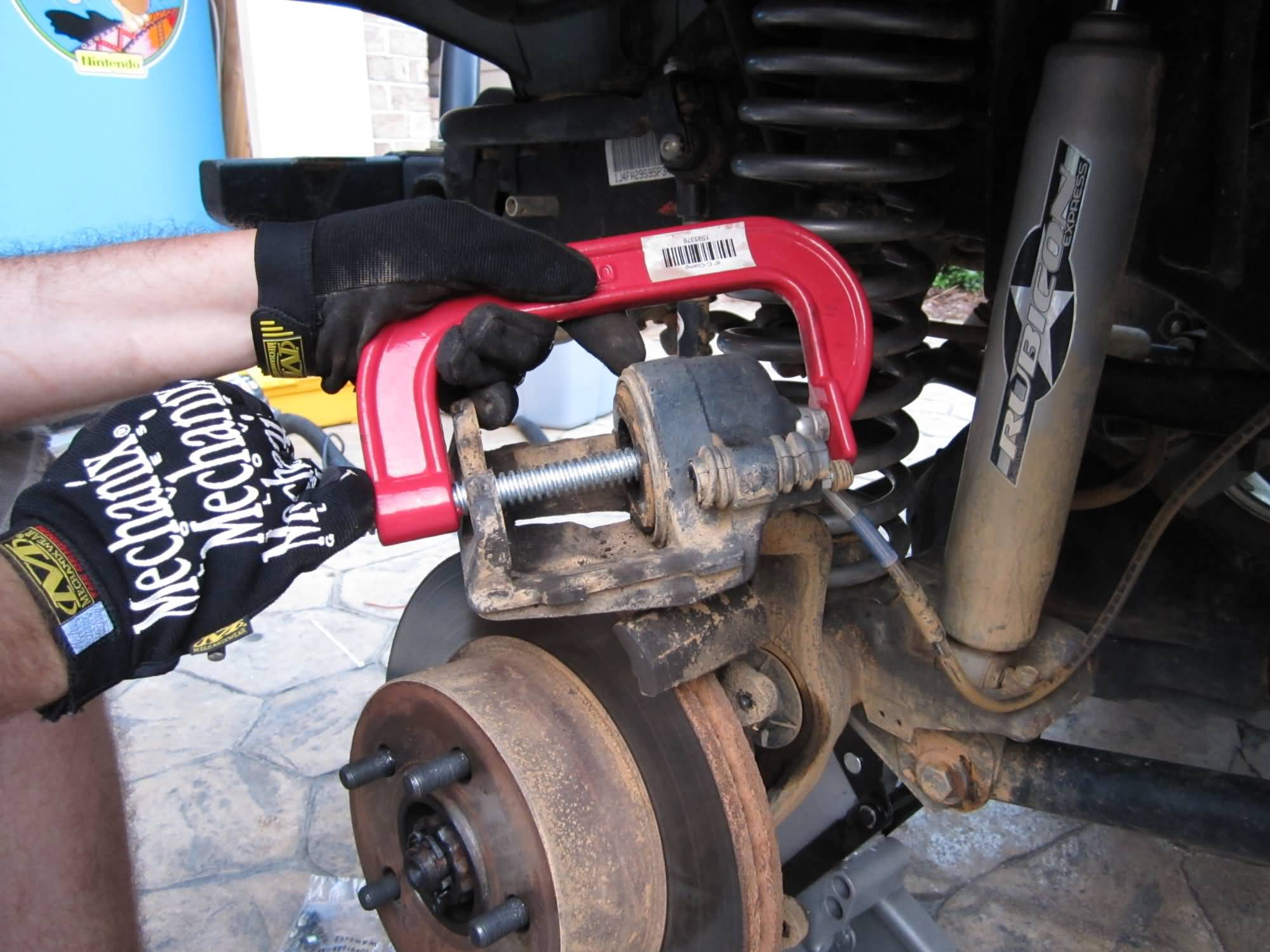
Pro Tip
An easy way to depress the piston with a C-clamp is to use one of the old pads between the clamp and the piston. It allows even pressure to be applied across the piston when tightening the clamp.
Step 4 - Remount the tire, lower the vehicle, and take for a test drive
Once you have finished changing all brake pads for each applicable section of the brake pads you are changing (front/rear), remount the wheel and tighten the lug nuts in a star pattern. Make sure the lug nuts are seated as tight as possible with the lug wrench.
After completion of all pad replacement, take the vehicle for a test drive to assure proper disc adjustment and stopping of the vehicle. Since there was no opening of any brake line allowing air to enter the hydraulic system, there is no need to bleed the brake system. In the event your brakes need to be bled, or you are concerned that the brake system has air within the lines, please refer to the article applicable to brake bleeding in the Related Discussions section below.
Featured Video: How to Replace Brake Pads on a Hybrid Lexus
Related Discussions
- Lexus RX 330 Brake Pad Replacement DIY - ClubLexus.com
- Lexus ES 350/ES300h Brake Pad Replacement DIY - ClubLexus.com




